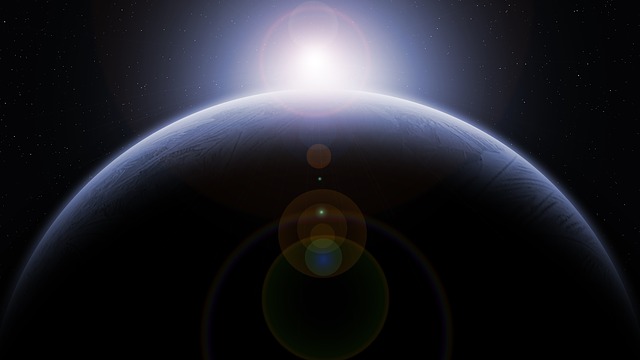
HD 206893 c may be a planet or brown dwarf star
The star HD 206893, which is almost 30 percent bigger than the sun, is located about 130 light years from Earth. It has a known debris disk around it and has also been considered a good candidate for discovering additional extrasolar planets or planets outside of the solar system. HD 206893 c, the newly-discovered exoplanet near the star, is possibly about 13 times bigger than Jupiter – the largest planet in the solar system. But its immense size and proof of nuclear fusion could indicate that it is between the borders of being a planet and a brown dwarf star, or a failed star. A brown dwarf star is an astronomical object that is sized between a giant planet and a small star, which is believed to emit infrared radiation. While brown dwarf stars form in the same manner as normal stars, they do not have the mass required for sustained nuclear fusion. Researchers had initially found a brown dwarf star, called HD 206893 b, orbiting the host star in 2017. Nevertheless, long-term observation by the ESO HARPS instrument, including accurate measurements of the host star's proper movement with the Gaia mission, also indicated the presence of an inner, lower mass counterpart. Further analysis using the GRAVITY instrument revealed the existence of the astronomical object HD 206893 c orbiting around 300 million miles from its host star. The finding provides concrete evidence that current instruments are able to directly discover exoplanets on orbital scales that are identical to the solar system. Head over to Space.news for more news about exoplanets. Watch this video about an exoplanet that was discovered while still in the process of creation. This video is from The Clampdown Report channel on Brighteon.com.More related stories:
The hottest known exoplanet found to have skies made out of iron and titanium. Earth-like planets not as rare as once thought: Astronomers estimate there are 2,000 nearby stars that house them. Cradles of life? New research says oceans on exoplanets may harbor more life than Earth. Astronomers discover 3 galaxies from EARLY UNIVERSE. Aerospace company CEO: Technology seen in sci-fi movie “2001: A Space Odyssey” needed for space travel. Sources include: Space.com TheSun.co.uk Phys.org Brighteon.comNewsweek calls on scientific community to admit “we were wrong” about covid
By Ethan Huff // Share
Chinese spy balloon that flew over Montana could be used to carry EMP or nuclear weapons
By Arsenio Toledo // Share
WARMING IS GOOD: Slight warming in Arctic, sub-Arctic seas boosts biodiversity, study finds
By Ethan Huff // Share
Warning as Merck’s COVID-19 pill molnupiravir is reportedly causing new mutations of the virus
By Arsenio Toledo // Share
Those attacks on gas stoves aren’t really about health
By News Editors // Share
An invisible assault: How everyday heavy metals sabotage brain health
By willowt // Share
Pentagon warns of China's rapidly expanding nuclear arsenal
By kevinhughes // Share
FCC grounds new Chinese drones in sweeping security move
By avagrace // Share
The methylation switch: Scientists identify diet that can turn back the cellular clock
By jacobthomas // Share
Renaissance or Ruin: A wake-up call for cultural revival and self-sufficiency
By kevinhughes // Share
Weight loss in midlife may trigger brain inflammation, study finds
By avagrace // Share











